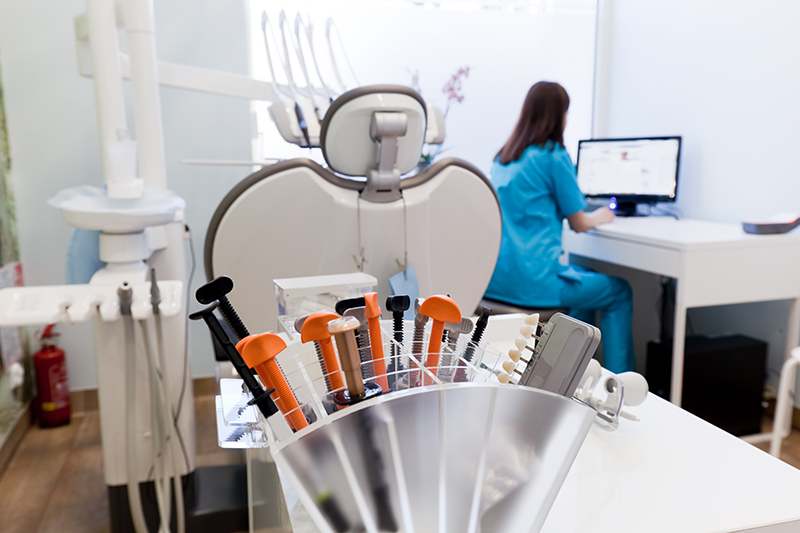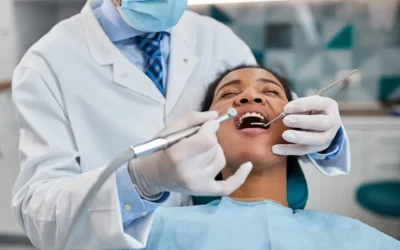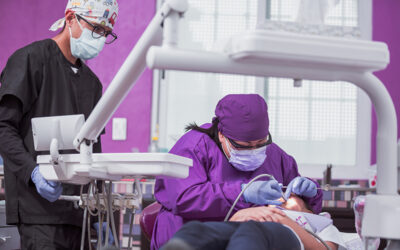While both dental and medical revenue cycle management (RCM) aim to optimize revenue for healthcare providers, they have distinct aspects that differentiate them. RCM in dentistry presents unique challenges compared to general medical care. For smaller practices with limited billing staff, managing these complexities while maintaining steady cash flow can be particularly challenging. Understanding dental RCM vs medical RCM is essential for providers looking to ensure efficient billing, as the two involve distinct coding systems, insurance rules, and documentation requirements.
Due to the complexities involved, many dental providers are choosing to partner with a dental revenue cycle management company to simplify billing operations. The right provider can help practices streamline workflows, improve cash flow, and free up time to focus on patient care.
Struggling with dental billing challenges?
Partner with our expert RCM team to simplify your workflow and boost revenue.
What is Dental RCM?
In the dental field, RCM is a comprehensive process that covers various steps in the dental billing process, from patient scheduling and registration, insurance verification and prior authorization to coding and charge capture, claim submission, denial management and appeal, patient collections, and accounts receivable (AR) follow-up. Ineffective processes and errors can lead to claim denials or delays, and even prompt audits.
Key Differences between Dental and Medical RCM
Structure and Insurance Coverage Variations
Dental insurance basically covers oral health procedures, such as cleanings, fillings, extractions, and other dental treatments. Dental plans include premiums, deductibles, coinsurance, and maximums and have a structure that is similar to health insurance. Most dental insurance plans use a 100/80/50 coverage model—covering 100% of preventive care, 80% of basic procedures, and 50% of major treatments.
Dental plans operate on an annual maximum benefit, meaning the insurer will only pay up to a certain dollar amount per year. This means coverage has limitations and once those limits are reached, the patient is fully responsible for any additional costs—regardless of medical necessity. Moreover, plans may have frequency limitations, for e.g., only covering two cleanings per year or a crown replacement once every five years. Not all procedures are covered, for example, cosmetic treatments such as teeth whitening are excluded. Due to these coverage limitations in dental RCM, it’s critical to verify benefits, track usage, and communicate clearly with patients to avoid surprise bills and payment issues.
Medical RCM covers a wider range of services, including hospital stays, surgeries, prescriptions, and managing various medical conditions. General health insurance plans offer more expansive coverage than dental when medical necessity is met.
Coding Systems and Documentation
Understanding CDT vs CPT codes in RCM is essential for distinguishing how dental and medical services are billed, coded, and reimbursed.
Dental procedures are billed using CDT codes. Documentation is generally simpler than medical due to the nature of dental procedures. However, claims must be submitted with supporting documents such as radiographs, periodontal charts, or detailed narratives.
Medical services are reported using CPT and HCPCS procedure codes, and ICD-10 codes for diagnoses. Medical claims require more detailed and extensive documentation to support the diagnosis, justify medical necessity, and comply with payer guidelines. This includes physician notes, test results, treatment plans, operative reports, and ICD-10/CPT codes and modifiers that accurately reflects the services provided.
While medical claims heavily depend on specific ICD-10 codes, dental claims generally do not require the same level of diagnostic specificity. However, when billing medical insurance (cross-coding), dental providers now need to use ICD-10 codes to specify the diagnoses behind those procedures. This is especially important with requirements from federal programs like Medicare and Medicaid.
Role of Co-morbidities
In medical coding and billing, co-morbidities are typically reported as secondary diagnoses on a claim along with the primary diagnosis. The additional medical conditions that a patient has impact treatment, length of stay, resource use, and reimbursement, especially in hospital settings.
Traditionally, dental practices primarily focused on addressing specific, problem-focused oral health issues like cavities or gum disease, where co-morbidities had a less important role. However, due to the link between dental and medical health, comorbidities can significantly impact the safety and effectiveness of dental treatments. This has led to the evolving requirements for ICD-10 coding in dental RCM.
Claims Processing
Dental coverage policies differ widely between payers and are often highly specific to procedures. Dental pre-authorizations and supporting documentation (e.g., X-rays, periodontal charts, and narratives) are frequently required. Dental claims are typically submitted on an ADA form.
Medical RCM involves navigating diverse medical insurance plans with varying coverage policies and reimbursement rates. Prior authorization is usually required for high-cost procedures, imaging, or specialist referrals. Medical claims are submitted using the CMS 1500 form.
Patient Responsibility
Patient financial responsibility in dental care is higher than in medical. The reason why patients usually have high out-of-pocket costs are:
- Dental insurance plans often have limitations, including annual maximums, deductibles, and co-pays.
- Coverage for basic and major procedures like fillings, crowns, and root canals may be significantly lower, ranging from 50-80% coverage for some procedures post-deductible.
- Major dental procedures, especially surgery or implants, can be expensive, leading to significant patient financial responsibility.
In medical services, the patient’s financial responsibility is typically a smaller percentage of the total cost.
Both dental and medical RCM can be challenging, which is why leveraging expert support is valuable.
Benefits of Outsourcing RCM for Improved Efficiency and Cash Flow
Understanding dental vs medical RCM is essential for achieving financial success. The distinctions between these models have led to a rising dependence on outsourced RCM services to handle the increasing complexity of billing processes. RCM companies specializing in both medical and dental billing bring deep expertise and advanced technologies, ensuring accurate coding, proper documentation, and timely claim submission, contributing to optimal reimbursement and steady cash flow.
Maximize your reimbursements while you focus on patient care with our dental RCM services!




